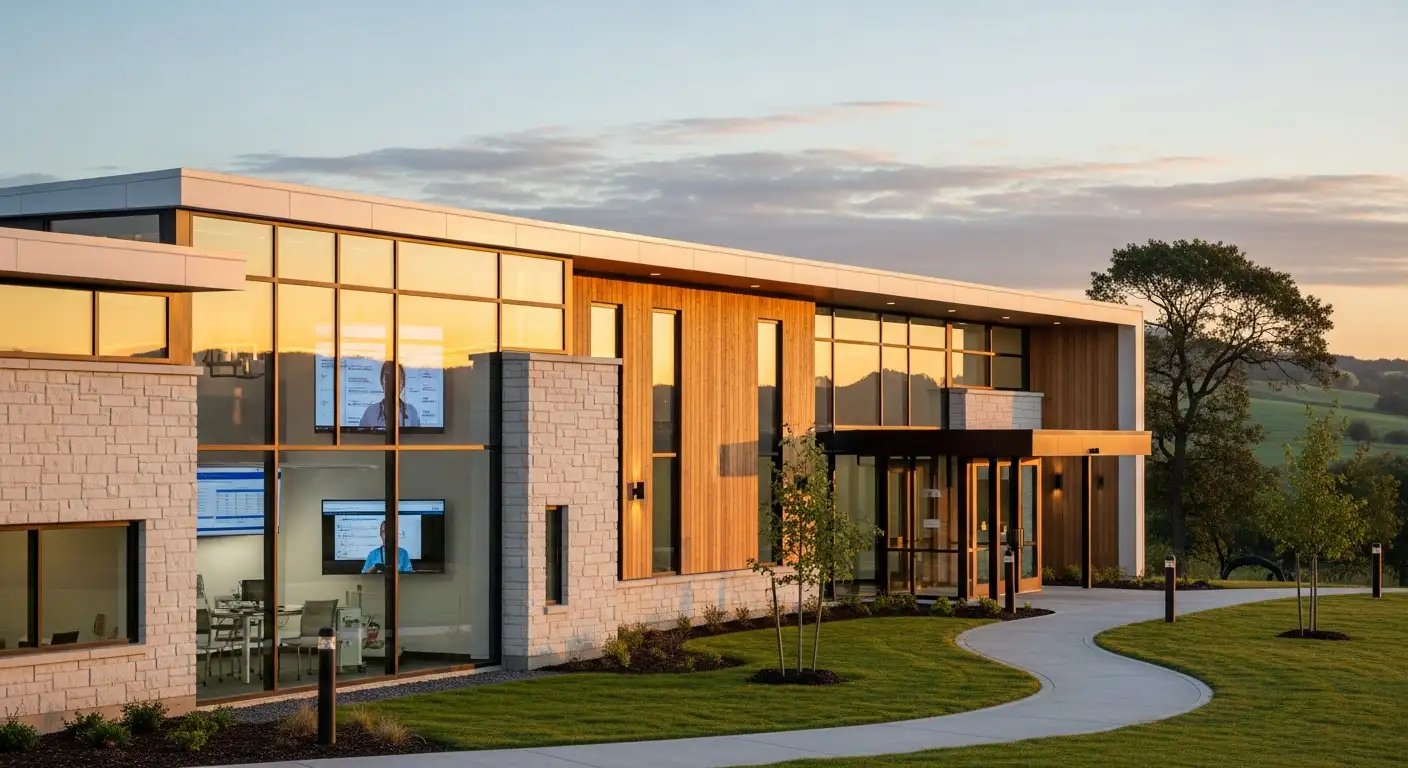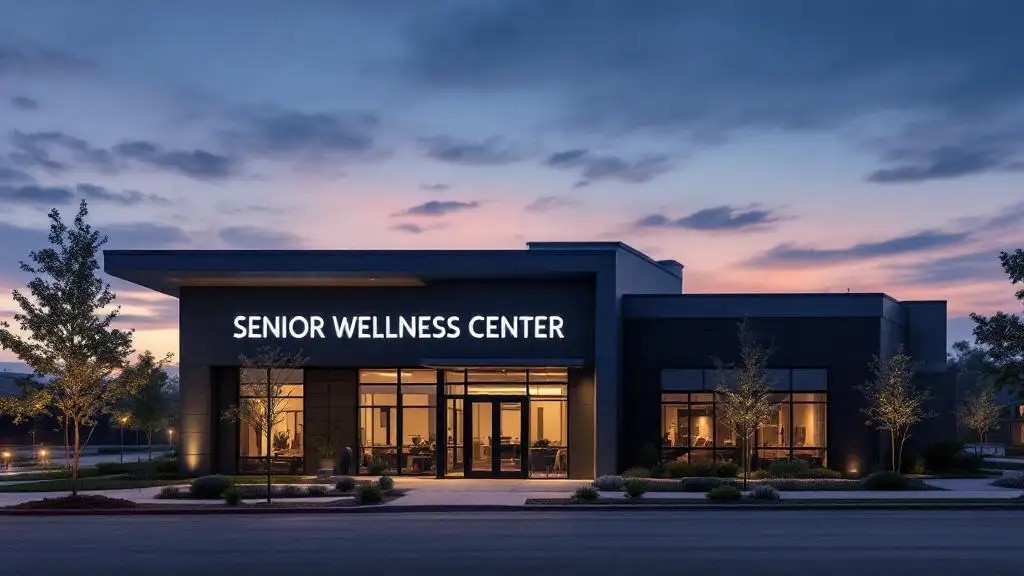Understanding Behavioral Interventions for Enhanced Quality of Life
Behavioral interventions have emerged as powerful tools in addressing complex challenges related to substance use disorders, mental health conditions, and their frequent co-occurrence. This article explores comprehensive strategies and recent advances that improve access, efficacy, and outcomes in treatment, with a strong focus on quality of life and recovery. By integrating evidence-based therapies, community resources, policy reforms, and holistic approaches such as physical activity, the behavioral health system is evolving to meet individuals' diverse needs.
Comprehensive Treatment Services Addressing Substance Abuse
What are the different types of comprehensive treatment services available for substance abuse?
Comprehensive treatment services for substance abuse cover a wide spectrum to address both the physical and psychological aspects of addiction.
Detoxification and Withdrawal Management
Detoxification is the initial step, focusing on safely managing withdrawal symptoms. This phase can take place in inpatient settings or specialized detox centers to ensure medical supervision.
Inpatient and Residential Care Levels
Inpatient and residential programs provide round-the-clock structured care. These are ideal for individuals with severe addiction or co-occurring disorders who need close monitoring and intensive support.
Outpatient and Intensive Outpatient Programs
Outpatient programs, including intensive outpatient programs (IOP) and partial hospitalization programs (PHP), offer greater flexibility while delivering therapies such as cognitive-behavioral therapy, family counseling, and group sessions. These programs accommodate those who do not require 24-hour care but benefit from regular treatment.
Medication-Assisted Treatment (MAT)
MAT uses FDA-approved medications—methadone, buprenorphine, naltrexone, among others—to reduce cravings and ease withdrawal. It's often integrated with behavioral therapies to improve recovery outcomes.
Behavioral Therapies Integration
Behavioral treatments such as cognitive-behavioral therapy, motivational interviewing, and community reinforcement approaches are combined with medication or standalone to modify harmful behaviors contributing to substance use.
Peer Support and Aftercare Planning
Peer recovery groups and aftercare plans are critical components, helping individuals maintain sobriety and navigate ongoing challenges post-treatment.
Use of Telehealth Services
Telehealth has expanded access to counseling, medication management, and support, especially during the COVID-19 pandemic, allowing care delivery beyond traditional settings.
These services, individually or combined, create a robust framework that addresses the complexity of substance use disorders and supports sustainable recovery.
Integrated Treatment for Co-Occurring Mental Health and Substance Use Disorders

How do treatment services address both mental health issues and addiction simultaneously?
Treatment for individuals with co-occurring mental health and substance use disorders employs integrated treatment models designed to unify care for both conditions. These models include coordinated and co-located services, as well as fully integrated, team-based approaches where mental health and addiction professionals work together within a single treatment plan.
What are coordinated and integrated care models?
Coordinated care involves separate but collaborative providers who communicate regularly about patient progress. Co-located care places behavioral health and medical services in the same facility for easier access but still treats conditions separately. Fully integrated care merges mental health and substance use treatment into a single program with unified treatment goals and joint decision-making.
How is screening and assessment conducted for dual diagnoses?
Initial patient assessments include screening for both psychiatric disorders and substance use issues using standardized tools aligned with DSM-5 criteria. This dual screening ensures early identification of co-occurring conditions, allowing for development of comprehensive care plans targeting both diagnoses concurrently.
How are psychiatric and addiction therapies integrated?
Effective treatment plans blend psychiatric therapies like cognitive-behavioral therapy (CBT), motivational interviewing, and medication management with addiction counseling and behavioral interventions. This integrated therapeutic approach addresses psychiatric symptoms and substance use behaviors simultaneously, improving engagement and recovery outcomes.
What improvements in outcomes result from integrated treatment?
Research demonstrates that integrated approaches reduce substance use and psychiatric symptom severity, lower hospitalization rates, and enhance functional outcomes like housing stability and employment. Such programs increase chances for successful long-term recovery and quality of life.
What barriers and facilitators affect implementation?
Barriers include cultural divides between mental health and addiction providers, regulatory complexities, workforce shortages, and stigma. Facilitators encompass strong leadership, targeted provider training including in structural and cultural competencies, supportive policies, and systems that follow a 'no wrong door' approach to care access.
What policy and clinical best practices support integrated treatment?
Best practices encourage cross-sector collaboration, routine dual diagnosis screening, using evidence-based therapies, and data-driven outcome measurements focusing on quality of life and reduced recidivism. Policy frameworks like SAMHSA's Treatment Improvement Protocol (TIP 42) provide guidance to clinicians for managing co-occurring disorders effectively.
What guidance does SAMHSA offer?
SAMHSA’s TIP Series No. 42 outlines comprehensive strategies for screening, assessment, stage-wise treatment, and coordinated services for co-occurring disorders. It emphasizes individualized care, integration of medication-assisted treatment where appropriate, continuous recovery support, and addressing social determinants of health to optimize outcomes.
The Essential Role of Behavioral Therapies in Addiction Recovery
What role do behavioral therapies play in addiction treatment?
Behavioral therapies are a cornerstone of addiction treatment, focusing on the psychological and behavioral factors that contribute to substance use disorders (SUD). These therapies help individuals identify triggers, develop coping strategies, and alter harmful patterns to support long-term sobriety.
Cognitive-behavioral therapy (CBT) efficacy
CBT is one of the most thoroughly researched behavioral treatments. It helps patients recognize and change distorted thought patterns tied to addiction. Studies reveal that 65-79% of those treated with CBT show improvements, especially in reducing substance consumption. While effect sizes are generally modest, CBT effectively supports relapse prevention and enhances psychosocial functioning.
Contingency management and motivational interviewing
Contingency management employs tangible rewards to reinforce positive behaviors like abstinence, increasing treatment adherence. Motivational interviewing, another key approach, fosters intrinsic motivation by resolving ambivalence about quitting substance use. Both strategies are frequently integrated with CBT to amplify treatment outcomes.
Family and couples therapy
Addiction often affects and is affected by family dynamics. Family and couples therapies engage loved ones to improve communication, resolve conflicts, and provide social support critical to recovery. This inclusion strengthens treatment effectiveness and helps sustain behavioral changes.
Behavioral therapy combined with pharmacotherapy
Behavioral therapies are commonly combined with medication-assisted treatments (MAT) such as methadone or buprenorphine for opioid use disorders. This combination addresses both the biological and behavioral components of addiction, improving retention in treatment and reducing relapse rates.
Impact on relapse prevention and treatment retention
Behavioral interventions facilitate skills like emotional regulation, goal setting, and problem-solving—essential tools for managing cravings and avoiding relapse. They also promote engagement, increasing the likelihood individuals complete their treatment plans.
Scientific evidence supporting behavioral approaches
A substantial body of research, including meta-analyses of randomized controlled trials, supports the efficacy of behavioral therapies. Evidence shows positive impacts on consumption, quality of life, and psychological health. Integrated approaches that combine behavioral therapies with medications yield the best outcomes for co-occurring mental health and substance use disorders.
Together, these therapies form an essential and effective framework in addiction recovery, helping individuals build sustainable lives free from substance use.
Aftercare Planning: Sustaining Recovery Beyond Treatment
How Important Is Aftercare Planning in Substance Abuse Treatment?
Aftercare planning plays a critical role in ensuring long-term sobriety following substance abuse treatment. Recovery doesn't end at rehab; ongoing support is essential for preventing relapse and managing life’s triggers. Aftercare provides continuous therapy, community support, and medical oversight that help individuals maintain gains made during initial treatment.
What Are the Components of Aftercare Planning?
Effective aftercare involves multiple interconnected elements:
- Therapy Continuation: Ongoing individual or group therapy to address underlying psychological issues and coping skills.
- Support Group Involvement: Participation in groups like AA, NA, or other peer support networks to foster accountability and shared experiences.
- Medical Management: Continued medication-assisted treatment and monitoring for withdrawal symptoms or co-occurring conditions.
- Environmental Modifications: Creating a home and social environment that reduces exposure to substances and stress triggers.
How Do Therapy Continuation and Support Group Involvement Help?
Extending therapy builds resilience against relapse by reinforcing healthy behaviors and emotional regulation. Support groups provide peer encouragement and practical advice, helping individuals feel less isolated in recovery. This social connection is especially valuable in managing cravings and stressful situations.
What Is the Role of Medical Management and Environmental Changes?
Medical follow-up addresses ongoing physiological needs, such as managing withdrawal or co-morbid mental health disorders, enhancing overall stability. Changing one’s environment—like avoiding certain social settings or nurturing positive relationships—limits exposure to relapse triggers and supports healthier routines.
How Are Personalized Care Plans Developed and How Long Should Aftercare Last?
Aftercare plans are tailored based on the individual's diagnosis, personal challenges, and social context. Typically, these plans extend for at least a year but may be longer depending on the severity of the disorder and co-occurring conditions. Flexibility allows adaptation as recovery progresses.
What Strategies Prevent Relapse and Manage Challenges?
Key relapse prevention methods include:
- Setting realistic recovery goals and monitoring progress.
- Stress management techniques such as mindfulness or exercise.
- Building strong social supports and avoiding high-risk situations.
- Engaging in rewarding activities that promote self-esteem and well-being.
Regular contact with healthcare professionals and community resources ensures prompt support if challenges arise.
| Aspect | Description | Benefit |
|---|---|---|
| Therapy Continuation | Long-term counseling sessions | Reinforces coping skills and emotional health |
| Support Groups | Peer-led recovery groups like AA and NA | Provides community support and accountability |
| Medical Management | Medication-assisted treatment and clinical follow-up | Stabilizes physiological and mental health |
| Environmental Modification | Adjusting living and social settings to reduce triggers | Lowers risk of relapse |
| Personalized Plans | Tailored recovery strategies and duration | Matches care to individual needs |
| Relapse Prevention | Techniques including stress management, social support, and goal-setting | Sustains sobriety over time |
Community-Based Care and Outreach for Behavioral Health

What role do community organizations and home visits play in behavioral health?
Community-based organizations and home visits serve as essential touchpoints for identifying behavioral health needs early, especially within underserved and high-risk populations. By being embedded in local environments, these organizations can conduct assessments, provide education, and link individuals to appropriate services.
How does early identification of behavioral health needs improve outcomes?
Early detection through community-based outreach allows timely intervention before conditions worsen. This proactive approach reduces the severity of symptoms, prevents hospitalizations, and increases the likelihood of sustained recovery.
Why is engagement especially important for populations with severe mental illness or those living in rural areas?
Populations with serious mental illness and individuals in rural settings often face greater barriers to care, including stigma, transportation challenges, and provider shortages. Community outreach and home visits help overcome these obstacles by bringing services to the individual’s location, improving trust and consistent engagement.
What benefits does outreach provide in improving access and outcomes?
Outreach enhances access by connecting people to resources they might otherwise not encounter. It promotes engagement, supports continuity of care, reduces emergency hospital use, and ultimately leads to better long-term behavioral health outcomes.
How is outreach integrated with telehealth and mobile crisis teams?
Combining community-based outreach with telehealth expands access to behavioral health care, especially in remote areas, by leveraging technology for assessments and therapy. Mobile crisis teams provide on-the-spot interventions during emergencies, reducing police encounters and reliance on inpatient hospitalization.
Together, these strategies form a comprehensive, person-centered approach aimed at meeting individuals where they are, enhancing both access and quality of care in behavioral health systems.
Policy Advances Shaping Behavioral Health Treatment Access
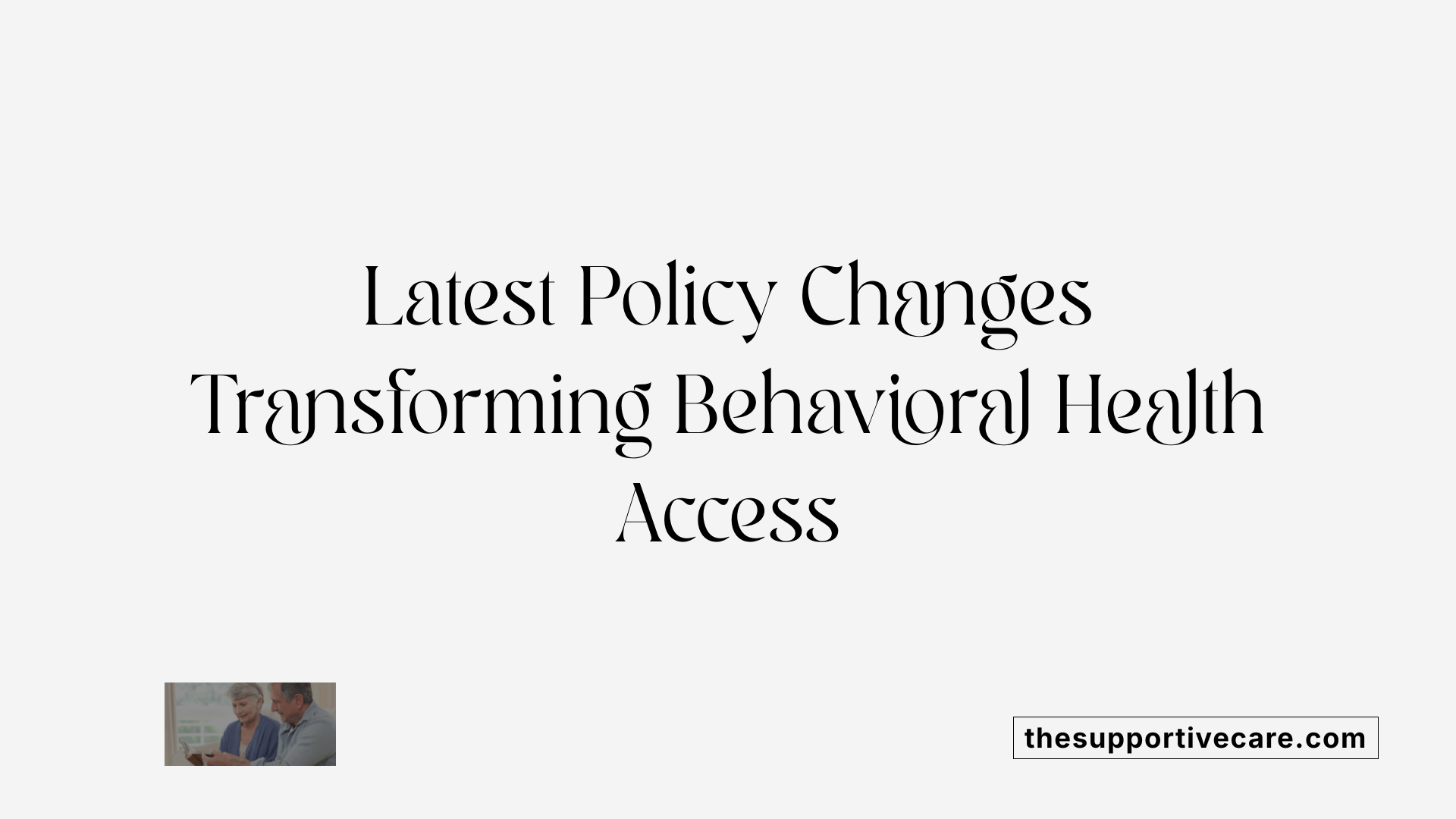
Affordable Care Act Impacts
The Affordable Care Act (ACA) has played a pivotal role in expanding behavioral health treatment access. It broadened insurance coverage, enabling more adults with mental health and substance use disorders to seek care. The ACA’s provision for essential health benefits includes mental health and substance use treatment, reducing previous financial and systemic barriers.
Parity in Insurance Financing
Legislation enforcing parity between behavioral health and physical health insurance coverage has contributed significantly to treatment accessibility. This policy mandates equal coverage terms, reducing out-of-pocket costs for patients. It has helped address some financial inequities previously discouraging individuals from pursuing needed behavioral health services.
Regulatory Flexibilities Due to COVID-19
The COVID-19 pandemic accelerated regulatory changes, especially expanding telehealth services and easing restrictions on medication-assisted treatments (MAT). These flexibilities allowed behavioral health providers to offer care remotely, increasing reach to vulnerable populations and maintaining continuity amid public health challenges.
Expansion of Telehealth and Medication-Assisted Treatment
Telehealth has become a core component of behavioral health care access, enabling community-based outreach and treatment in a timely manner. Medication-assisted treatment for opioid and alcohol use disorders has also expanded, supported by relaxed regulations, improving recovery options.
Remaining Disparities Among Marginalized Groups
Despite these advances, disparities persist for people of color, immigrants, and those with low incomes. Structural factors and social determinants still limit equitable access, underscoring the need for policies that target these gaps through culturally responsive care and inclusive outreach initiatives.
Decriminalization and Crisis Response Reform to Improve Outcomes
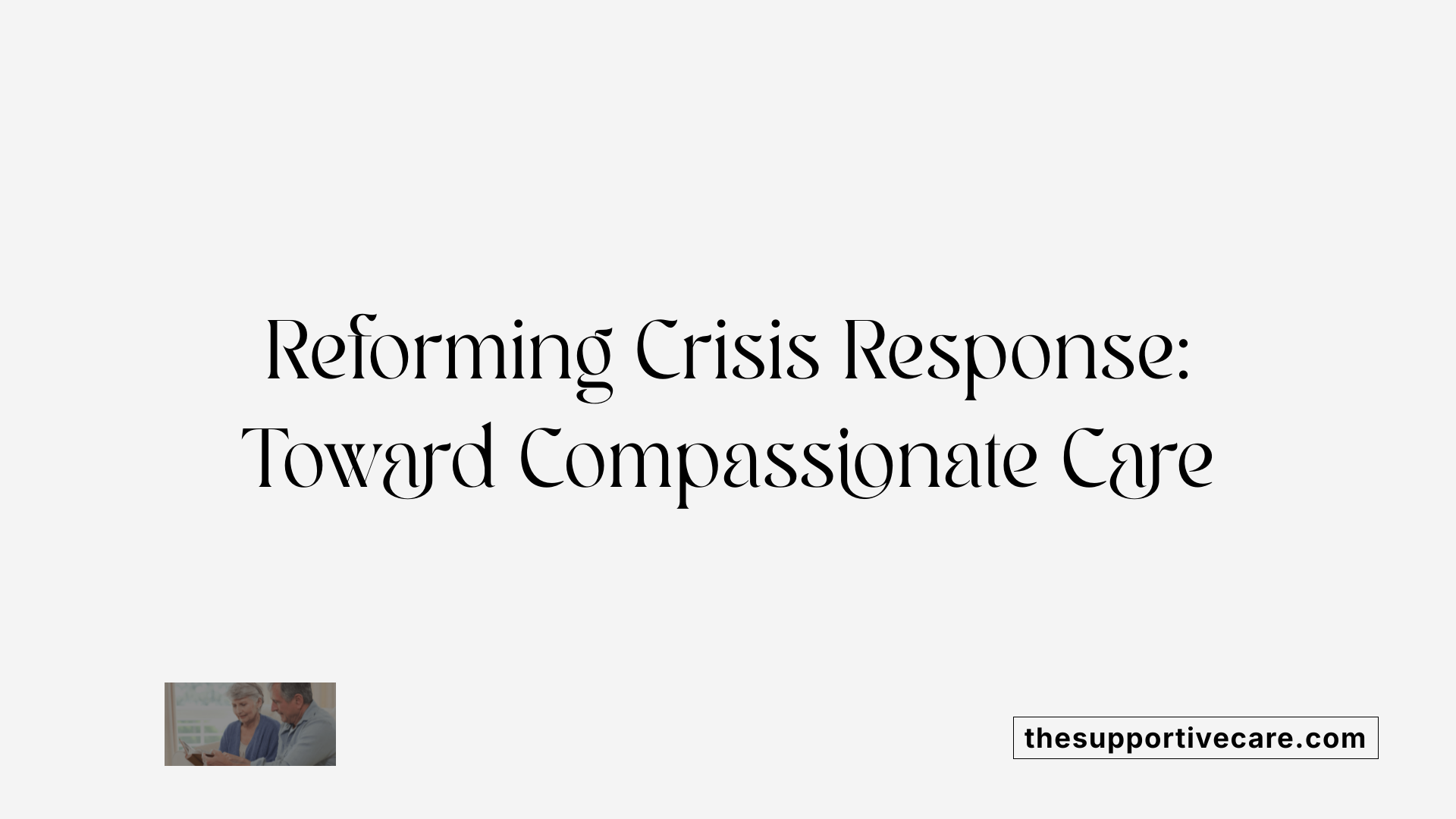
What is decriminalization of mental health and substance use disorders?
Decriminalization involves shifting the response to mental health and substance use disorders from the criminal justice system to health-focused care. This means reducing arrests and incarceration for individuals experiencing behavioral health crises and instead providing appropriate treatment and support.
How do mobile crisis teams serve as alternatives to police encounters?
Mobile crisis teams are specialized, community-based responders trained to handle behavioral health emergencies. They offer immediate, compassionate intervention that de-escalates crises without involving law enforcement, thereby reducing trauma and unnecessary criminalization.
What evidence supports crisis intervention programs?
Evidence-based crisis intervention programs have been shown to significantly improve patient outcomes. They provide timely, individualized care that reduces symptoms and facilitates connections to ongoing support services.
How do community reentry programs improve outcomes?
Community reentry programs assist individuals transitioning from incarceration back into the community. These programs focus on behavioral health support, housing, employment, and social integration, which are critical for sustained recovery and well-being.
What impact do these reforms have on recidivism and costs?
Implementing decriminalization and crisis response reforms reduces repeat arrests and hospitalizations, leading to lower recidivism rates. Moreover, these approaches are cost-effective, as they decrease reliance on expensive emergency services and correctional facilities.
Together, decriminalization and investment in crisis response systems create a more humane and efficient behavioral health system that supports recovery while alleviating burdens on the criminal justice and healthcare systems.
Social Determinants: Housing, Employment, and Community Safety
How Do Social Factors Affect Behavioral Health Outcomes?
Social determinants such as stable housing, consistent employment, and community safety profoundly shape behavioral health outcomes. Individuals lacking secure housing or meaningful employment often experience increased stress, isolation, and barriers to treatment—factors that elevate risks for depression, anxiety, and substance use disorders.
Why Are Investments in Housing Stability and Economic Opportunities Crucial?
Investment in housing stability and economic opportunities creates a foundation for recovery by addressing basic needs that underpin mental wellness. Stable housing provides a safe environment conducive to therapeutic engagement, while employment fosters purpose and financial independence, both essential for sustaining recovery.
How Can These Investments Reduce Mental Health and Substance Use Disorders?
By improving access to secure housing and jobs, communities can lower the incidence and severity of depression, anxiety, and substance use. These interventions reduce stressors that often precipitate or exacerbate behavioral health problems, thereby supporting healthier lifestyle choices and engagement with care.
What Policies Are Effective for Marginalized Communities?
Targeted policies that prioritize resources for marginalized populations — including people of color, immigrants, and low-income groups — are vital. These policies should focus on culturally sensitive services, reducing systemic barriers, and expanding access to preventative and treatment services to close persistent health disparities.
How Do Social Determinants Promote Recovery and Reduce Disparities?
Addressing social determinants promotes a holistic recovery approach by integrating housing, employment, and safety considerations with behavioral health care. This integration enhances individual quality of life and reduces disparities by ensuring that vulnerable populations receive comprehensive support tailored to their unique social contexts.
| Social Determinant | Impact on Behavioral Health | Examples of Policy Interventions |
|---|---|---|
| Housing Stability | Reduces stress and increases treatment engagement | Supportive housing programs, eviction prevention |
| Employment | Fosters financial stability and self-esteem | Job training and placement services |
| Community Safety | Decreases trauma exposure and enhances well-being | Community policing reforms, violence prevention |
Workforce Development and Cultural Competency in Behavioral Health
Expanding and Diversifying the Behavioral Health Workforce
To address persistent unmet needs in behavioral health care, a major focus lies in growing and diversifying the workforce. Recruiting providers from varied racial, ethnic, and cultural backgrounds helps better reflect and serve diverse patient populations. This expansion targets the shortage of qualified professionals, especially in underserved and rural communities.
Training in Structural Competency and Cultural Humility
Provider education now emphasizes structural competency — understanding how social determinants and systemic inequalities affect health — coupled with cultural humility, which encourages ongoing self-reflection and respect for patients' cultural identities. This training equips clinicians to navigate complex social contexts and reduce health disparities.
Addressing Linguistic Diversity
Language barriers significantly hinder access and quality of behavioral health care. Increasing the availability of multilingual providers and interpreters enhances communication, ensures accurate diagnosis, and promotes adherence. Tailored interventions in the patient’s preferred language improve engagement and outcomes.
Improving Provider Sensitivity to Social and Cultural Factors
Providers are trained to recognize cultural norms, stigma, and social challenges influencing behavioral health. Understanding patients' lived experiences and community contexts fosters trust and collaborative care. This sensitivity reduces disparities especially among people of color, immigrants, and low-income individuals.
Enhancing Patient Engagement and Treatment Outcomes
Culturally competent care improves rapport-building and reduces dropout rates. Patients feel respected and understood, increasing their willingness to participate actively in treatment. Evidence shows that these approaches lead to better health outcomes by addressing both clinical symptoms and social determinants affecting recovery.
Measuring Success: Quality of Life and Functional Outcomes

Beyond Clinical Symptom Reduction
Improving behavioral health goes far beyond simply reducing clinical symptoms like anxiety or substance use. Effective treatment aims to enhance individuals' overall quality of life and help them function better in their communities.
Outcomes Including Housing Stability, Employment, Social Integration
Key measures of success include stable housing, gainful employment, and meaningful social connections. These factors reflect a person's ability to live independently, contribute economically, and maintain supportive relationships—all vital for long-term recovery.
Reduction in Overdose, Suicide, and Recidivism Rates
Tracking reductions in overdose occurrences, suicide rates, and rates of criminal recidivism are essential indicators of system effectiveness. Lower rates in these areas signal real-world impact of behavioral health interventions.
Importance of Individual-Centered Metrics
Outcome measurement should prioritize what matters most to the individual—such as their quality of life and personal goals—not just traditional clinical markers. This shift ensures care remains focused on holistic healing.
Role in System Reform and Funding Priorities
Measuring outcomes in these domains helps guide policy reform and funding by highlighting treatment approaches that provide comprehensive benefits. It supports investments in community-based care, integrated services, and recovery-oriented models that improve life beyond symptom control.
The Efficacy of Cognitive-Behavioral Interventions in Substance Use Disorders
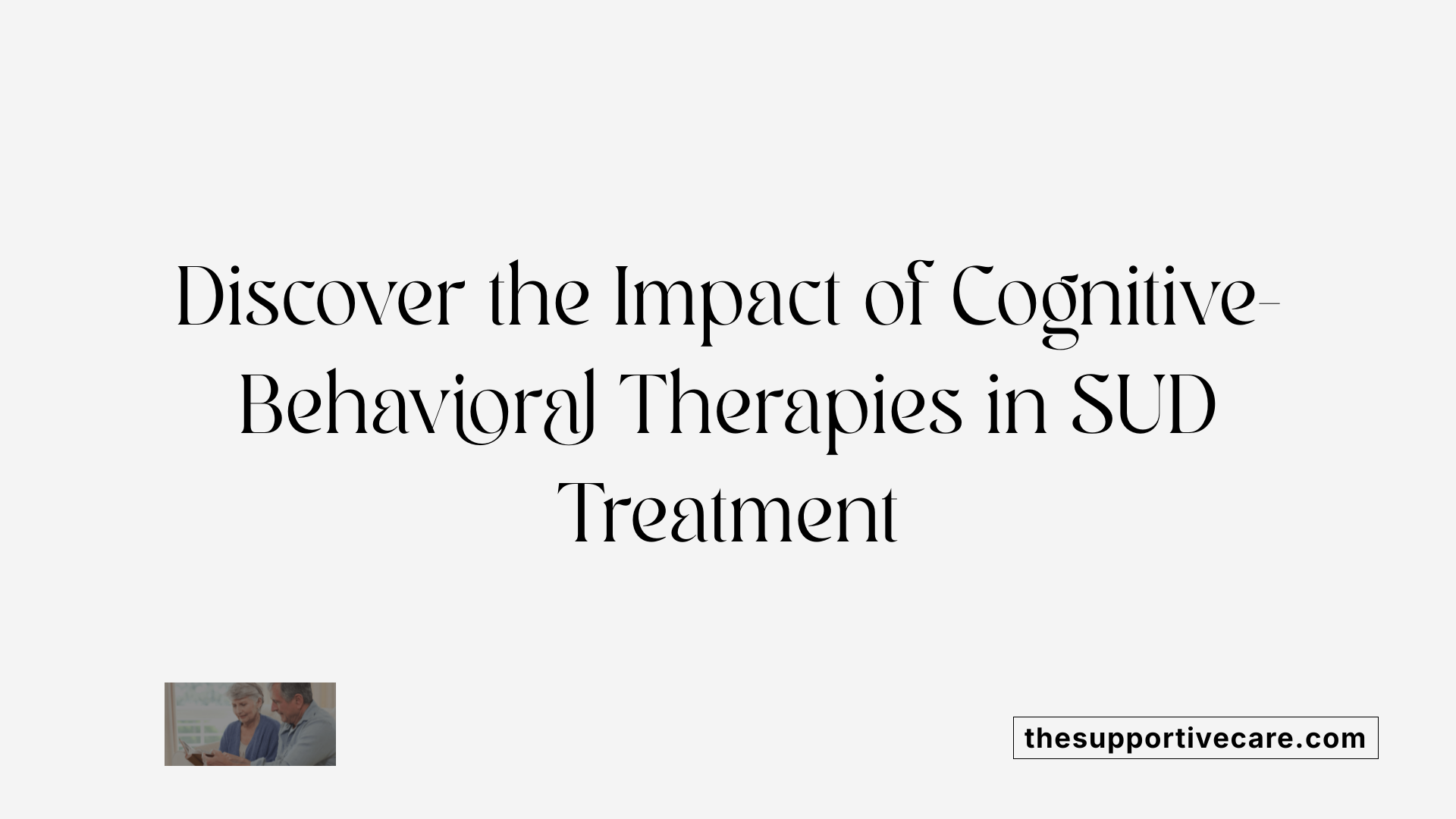
What does the meta-analysis reveal about the effectiveness of cognitive-behavioral interventions (CBI)?
A comprehensive meta-analysis evaluating 47 randomized trials, encompassing 912 effect sizes, shows that cognitive-behavioral interventions generally produce small yet positive effects on treatment outcomes. These findings suggest that while the impact of CBI is modest, it consistently benefits individuals undergoing treatment for substance use disorders.
How do CBIs affect substance consumption compared to psychosocial outcomes?
CBI effects are more pronounced for reducing substance consumption than for improving psychosocial factors. Specifically, between 65% and 79% of individuals treated with CBI experience improvement, particularly in curbing their substance usage. However, improvements in social or psychological wellbeing related to substance use appear less robust and variable.
What is the benefit of combining CBI with usual care?
When CBI is added to usual care, it significantly enhances recovery outcomes compared to usual care alone. This combination leverages the structured behavioral techniques of CBI alongside standard treatment to provide a more comprehensive approach, resulting in better substance use reduction and overall recovery.
Are CBIs effective for individuals with co-occurring mental health and substance use disorders?
The evidence on CBI’s efficacy for co-occurring disorders is mixed. Some studies demonstrate notable benefits over usual or control care conditions, especially concerning consumption outcomes. Yet, other findings vary, possibly due to differences in specific disorders targeted or treatment comparison groups. This highlights the need for tailored interventions in this population.
In summary, cognitive-behavioral interventions offer a valuable tool in the treatment of substance use disorders, especially in reducing consumption. Their integration with usual care and careful adaptation for co-occurring disorders can enhance outcomes, although the overall effect size remains modest but meaningful.
Community Reinforcement Approach: Improving Quality of Life in Addiction
What are the theoretical foundations of the Community Reinforcement Approach (CRA)?
CRA integrates various psychological theories to promote sustained recovery from addiction. It is grounded in operant conditioning, which emphasizes modifying behavior through positive reinforcement. Social learning theory highlights the importance of modeling and interaction within supportive environments. Additionally, motivational enhancement strategies help increase clients’ readiness for change, while ecological systems theory considers the multiple environmental and social factors influencing behavior.
What evidence supports CRA's effectiveness internationally?
A notable 12-week randomized trial conducted at Fountain House in Lahore, Pakistan, assessed CRA combined with the traditional Minnesota model treatment against the traditional treatment alone. The results demonstrated significant improvements, affirming CRA's efficacy beyond Western contexts and supporting its global applicability.
How does CRA improve various quality of life domains for individuals with addiction?
Participants receiving CRA showed substantial advancements across several dimensions measured by the WHOQOL-BREF scale:
- Physical health: Enhanced energy, mobility, and reduced health complaints
- Psychological health: Better emotional well-being and cognitive functioning
- Social relationships: Stronger interpersonal connections and support networks
- Environmental domain: Improved living conditions and perceived safety
Does CRA impact overall happiness and well-being?
Yes, the study revealed that individuals undergoing CRA reported significantly higher levels of happiness, indicating CRA's capacity to foster overall well-being alongside addiction recovery.
What are CRA's advantages regarding cost and adaptability?
CRA is recognized as a cost-effective behavioral treatment. Its flexible structure allows integration with other treatment models, making it adaptable across diverse clinical settings and populations. This broad applicability aids in tailoring interventions to individuals’ behavioral, psychological, social, and environmental needs for improved outcomes.
Incorporating Physical Exercise into Substance Use Recovery
Types of Beneficial Physical Activities
Various forms of exercise contribute effectively to substance use disorder (SUD) recovery. Aerobic activities like walking and cycling, strength training, yoga, Tai Chi, and even outdoor adventure exercises have all been recognized as acceptable and beneficial within recovery settings. Low to moderate intensity is especially recommended early in recovery to boost adherence and health benefits.
Reducing Cravings and Promoting Abstinence
Exercise plays a crucial role in reducing substance cravings and promoting abstinence. Physical activity stimulates neurotransmitter release, which improves mood and emotional well-being. This mechanism supports relapse prevention by fostering a more stable and positive mental state during recovery.
Enhancement of Life Skills Vital for Recovery
Beyond physiological benefits, physical activities help develop essential life skills such as goal setting, emotional regulation, problem-solving, and social interaction. These skills are instrumental in navigating the challenges of recovery and maintaining long-term sobriety.
Synergy of Exercise with Behavioral Therapies
When exercise is integrated with behavioral therapies like cognitive-behavioral therapy (CBT) and motivational interviewing, treatment outcomes improve. This synergy addresses both the physical and psychological aspects of addiction, making rehabilitation more holistic.
Barriers to Adherence and Strategies to Overcome Them
Adherence to exercise regimens can be hindered by low motivation or poor physical condition common among individuals in recovery. Strategies to enhance adherence include social support, positive reinforcement, culturally sensitive approaches, and goal setting. Adventure therapy and cooperative group activities additionally foster self-esteem, responsibility, and teamwork, further encouraging consistent participation.
Through these multifaceted benefits, incorporating physical exercise into SUD treatment supports improved quality of life and reinforces sustainable recovery.
Adventure Therapy and Experiential Activities in Behavioral Health
Promotion of Self-Esteem, Responsibility, and Teamwork
Adventure therapy and experiential activities play a significant role in behavioral health recovery by actively promoting self-esteem, responsibility, and teamwork. These activities often involve group challenges and cooperative tasks that require individuals to work together, boosting social skills and developing a sense of accountability.
Emotional Recovery Support
Engagement in adventure therapy supports emotional healing by providing a safe space to confront fears, manage stress, and build resilience. Experiencing success within these activities fosters positive emotional growth, helping individuals process trauma and enhance their mental well-being.
Fostering Long-Term Sobriety through Cooperative Activities
Cooperative and adventure-based interventions encourage sustained sobriety by cultivating peer support and enhancing motivation. By promoting trust and shared goals, such activities strengthen social connections integral to relapse prevention and build a foundation for ongoing recovery.
Holistic Rehabilitation Models Including Physical Engagement
Holistic rehabilitation programs now incorporate physical activities such as adventure therapy as core components. These models address the full spectrum of recovery needs — mental, physical, and social — recognizing that physical engagement promotes overall health and supports behavioral health improvement.
Neurotransmitter Benefits Impacting Mood and Relapse Prevention
The physical exertion involved in adventure activities stimulates neurotransmitter release, which improves mood and emotional well-being. This biochemical effect aids in reducing cravings and lowers relapse risk, underlining the importance of integrating physical and experiential therapies in comprehensive behavioral health treatment.
Integrated Care Models in Behavioral Health: From Screening to Full Integration
What are the different models of integrated behavioral health care?
Integrated behavioral health care ranges broadly from simple screening and brief treatment to fully integrated care. The primary models include:
- Coordinated Care: Behavioral health and medical providers operate in separate practices but collaborate on patient care.
- Colocated Care: Services are provided in the same facility but remain siloed, with limited collaboration.
- Fully Integrated Care: A collaborative team-based approach where behavioral health professionals and primary care providers jointly develop and implement unified care plans.
How do patient-centered medical home (PCMH) models support behavioral health integration?
The PCMH emphasizes whole-person, coordinated, and team-based care, aligning closely with fully integrated behavioral health. This model focuses on:
- Coordinating medical and behavioral treatments
- Improving communication among care teams
- Enhancing patient engagement and satisfaction
- Addressing both physical and mental health needs in a unified system
What barriers exist to integrating behavioral health care?
Several challenges complicate integration efforts:
- Cultural Differences: Diverse training and perspectives between medical and behavioral health providers.
- Regulatory and Administrative Complexities: Differing confidentiality laws and billing systems.
- Workforce Shortages: Limited number of trained behavioral health clinicians.
- Payment Model Disparities: Fragmented funding mechanisms.
- Stigma and Infrastructure: Persistent stigma and inadequate facilities for integration.
What outcomes result from integrated behavioral health?
Research shows integrated care leads to:
- Improved health outcomes for mental health and substance use disorders
- Cost savings from reduced hospitalizations and emergency visits
- Higher patient satisfaction due to streamlined services
What policy actions support integrated behavioral health?
Advocacy focuses on:
- Promoting workforce development and training in integrated care
- Reducing stigma associated with behavioral health conditions
- Reforming reimbursement and confidentiality policies
- Supporting research to identify best practices
Overall, adopting comprehensive integrated care models holds promise for overcoming existing treatment gaps and improving behavioral health across populations.
Comprehensive Public Programs Addressing a Range of Behavioral Health Needs
State-Level Approaches such as Missouri's Division of Behavioral Health
The Division of Behavioral Health (DBH) in Missouri serves as a model for state-level initiatives delivering comprehensive care for individuals facing behavioral health challenges. Focusing on substance use disorders and mental illnesses, the DBH crafts programs tailored to meet the unique needs of various populations. Their strategic approach prioritizes crisis intervention and individualized support, ensuring accessibility for those in urgent need or with the most severe conditions.
Services for Diverse Populations Including Youth, Pregnant Women, and Veterans
DBH’s services are inclusive and designed for a broad spectrum of individuals. Special attention is given to youth and adolescents, pregnant women, intravenous drug users, and veterans among other groups. This inclusive framework ensures that care is culturally and situationally appropriate, addressing the distinct challenges experienced by these populations while promoting engagement and recovery.
Wide Continuum of Care: Assessment, Counseling, Detox, Residential, Outpatient
The continuum of care offered encompasses assessment, individual and group counseling, family counseling, detoxification, residential programs, and outpatient services. This variety allows for flexibility in meeting patients where they are in their recovery journey. Comprehensive services include education, self-help group participation, and tailored supports that equip individuals with the tools necessary for long-term stability.
Special Programs for Opioid Treatment and Co-Occurring Disorders
DBH also provides specialized programs targeting opioid dependency, including medication-assisted treatment (MAT) that aligns with best practices by easing withdrawal and minimizing cravings. Additional care extends to co-occurring disorders, integrating mental health and substance use disorder interventions to promote holistic recovery.
Crisis Intervention and Peer Support Services
Recognizing the importance of immediate support during crises, the division facilitates access to the 988 Suicide & Crisis Lifeline, emergency crisis services, and disaster response planning. Peer support services and assertive community treatment programs further enhance engagement and provide critical ongoing support, cementing a robust safety net for individuals navigating behavioral health challenges.
Medication-Assisted Treatment: A Cornerstone of Addiction Recovery
What Are FDA-Approved Medications for Substance Use Disorders?
Medication-Assisted Treatment (MAT) utilizes FDA-approved medications tailored to specific substance use disorders (SUDs). For opioid use disorder, medications like methadone, buprenorphine, and naltrexone are commonly used. Alcohol use disorder patients may benefit from naltrexone, acamprosate, and disulfiram, while nicotine replacement therapies and other medications help address tobacco dependence.
How Does MAT Help in Withdrawal and Craving Reduction?
MAT plays a critical role in easing withdrawal symptoms, such as nausea, muscle cramps, and mood changes, which can deter people from maintaining recovery. It also helps reduce cravings, a major contributor to relapse. This reduction supports individuals in managing the physical and psychological challenges during recovery.
How Is MAT Integrated with Behavioral Therapies?
MAT is most effective when combined with behavioral interventions like cognitive-behavioral therapy (CBT), motivational interviewing, and community reinforcement approaches. This integrated care addresses both the physical aspects of addiction and underlying psychological and social factors, improving overall treatment outcomes.
What Are Certification Programs for MAT?
Certified treatment programs, such as those in Missouri's CSTAR initiative, ensure quality and compliance in MAT delivery. These programs offer a comprehensive range of services, including assessment, counseling, and medication management, targeting various populations like pregnant women and adolescents.
How Do Policies Tackle Stigma and Accessibility?
To improve MAT accessibility, current policies emphasize reducing stigma around addiction treatment and expanding access through regulatory flexibilities and telehealth. Such initiatives help reach underserved populations, including those in rural areas or with co-occurring disorders, fostering broader engagement in recovery.
Educational Resources and Peer Support in Sustained Recovery
Availability of Fact Sheets on Mental Health and Substance Use Disorders
Accessible educational materials are crucial in supporting individuals through recovery. Comprehensive fact sheets are available covering a wide range of mental health conditions—such as anxiety, ADHD, bipolar disorder, childhood mental illness, depression, schizophrenia, and eating disorders—as well as substance use disorders including alcohol, marijuana, tobacco, methamphetamine, and opioids. These resources provide clear, reliable information that can demystify conditions and treatment options, helping individuals and families make informed decisions.
Online Recovery Support and Virtual 12-Step Meetings
With advances in technology, online recovery supports have become an essential complement to traditional treatment. Virtual meetings for programs like Alcoholics Anonymous (AA), Narcotics Anonymous (NA), and other 12-step groups offer accessible, convenient platforms where individuals can connect and share experiences regardless of location. These digital resources help maintain continuous peer support, which is vital for long-term recovery adherence and preventing relapse.
Peer Support Services and Recovery Coaching
Peer support services utilize individuals with lived experience to provide empathy, encouragement, and guidance. Recovery coaching offers personalized support focused on goal-setting and overcoming barriers to sustained recovery. These services improve treatment engagement by fostering trust and relatability, especially among populations facing stigma or lacking access to conventional clinical services.
Role in Enhancing Treatment Engagement and Outcomes
Educational resources and peer-led supports collectively enhance engagement by empowering individuals and creating a sense of community. They contribute to better treatment retention, reduce feelings of isolation, and promote the development of coping skills. This integrated approach can lead to improved mental health and substance use outcomes, as well as increased quality of life.
Support for Special Populations
Tailored resources and peer support efforts also address the unique needs of special populations, including veterans, older adults, and those with co-occurring disorders. Customizing education and support ensures relevance and cultural sensitivity, which improves accessibility and effectiveness for diverse groups navigating recovery.
Addressing Barriers to Behavioral Health Integration and Access
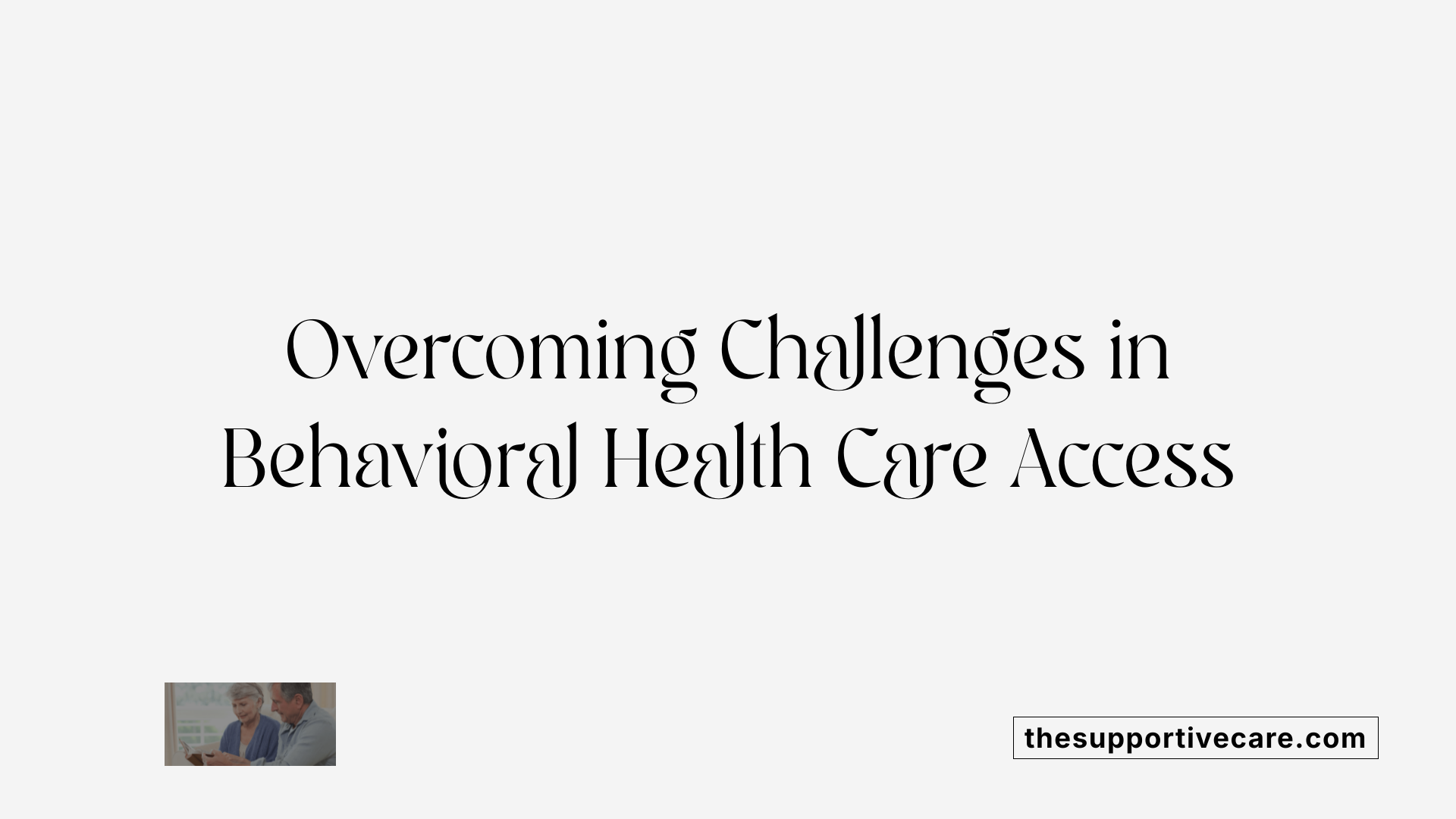
Workforce Shortages and Training Gaps
One of the main barriers to behavioral health integration is the shortage of trained providers. Expanding the behavioral health workforce is essential, along with improving training in cultural humility and structural competency. Providers need skills to effectively serve diverse populations, including people of color, immigrants, and those with low incomes.
Stigma Reduction and Cultural Sensitivity
Stigma around mental health and substance use disorders remains a significant obstacle to treatment access. Tailored interventions that respect cultural differences and promote community engagement can reduce stigma. Emphasizing cultural sensitivity helps build trust and improves engagement among marginalized groups.
Regulatory, Administrative, and Payment Challenges
Complex regulatory requirements and fragmented payment models hinder seamless integration of behavioral health into primary care. Policies supporting parity in financing and the removal of administrative barriers can encourage coordinated, co-located, and fully integrated care models, improving overall system efficiency.
Infrastructure Development and Technology Adoption
Infrastructure limitations restrict the adoption of innovative care approaches like telehealth and community-based outreach. The COVID-19 pandemic showed that regulatory flexibilities in telehealth boost access, especially in rural or underserved areas. Sustaining and expanding technology use can help meet patients where they are.
Strategies to Promote Equitable Access
To promote equity, systems must adopt a "no wrong door" approach, ensuring people receive appropriate care regardless of entry point. Community organizations, home visits, and mobile crisis teams outreach to underserved populations, addressing social determinants such as housing and economic stability. These strategies improve early detection, engagement, and recovery outcomes across diverse communities.
Toward Holistic Behavioral Health Care and Enhanced Quality of Life
Advances in behavioral interventions are reshaping the landscape of mental health and addiction treatment by promoting integrated, evidence-based, and person-centered approaches. Addressing the full spectrum of needs—from early intervention and community outreach to sustained aftercare and social determinants—ensures that care is accessible, effective, and equitable. Incorporating physical activity, behavioral therapies, and comprehensive support systems builds resilience and nurtures recovery. Continued policy reforms, workforce development, and cross-sector collaboration will be essential to fully realize the potential of behavioral health services in improving quality of life for individuals and communities alike.
References
- Transforming Mental Health And Addiction Services
- Cognitive-behavioral interventions for co-occurring ...
- The effectiveness of the community reinforcement ...
- Enhancing Substance Use Disorder Recovery through ...
- Managing Life with Co-Occurring Disorders
- Substance Use Disorder (SUD): Symptoms & Treatment
- The Integration of Care for Mental Health, Substance ...
- Services and Resources - Missouri Department of Mental Health
- Integrated Treatment for Co-Occurring Disorders







































